Starting at the very beginning and continuing until now, one of a nation’s objectives for the conquest of space is to obtain military strategic advantages by using such unique features of space as extraterritoriality, global access, unique physical conditions, and a number of others. Thus, in the late twentieth century, the revolutionary development of humanity’s new technological capacities inexorably moved the world into a new phase of geopolitical confrontation — the race to attain strategic advantages in space, which, in turn, made military operations in space one of the most important ways to ensure national security. This implies that the significance of various arenas of confrontation will change in the twenty-first century; space will grow considerably in importance as the arena for attaining the objectives of armed conflict (Fig. 1). The world’s leading nations thus accord space a special position in contemporary military doctrine and approaches to national security.
The ”The United States’ National Security Strategy for a New Century” (1998) expresses Washington’s principal approaches to the use of space in the interests of national security. According to this document, the United States intends to maintain its leadership in space, attain unimpeded access to space and to its use in the interests of protecting national security and ensuring the well being and prosperity of the nation. The fact that space has acquired importance from the standpoint of access to global information is stressed, because this has serious political, diplomatic, military, and economic consequences for the United States. Space is seen here as one of the major arenas in which current and future technologies can play a key role in the use of military power for generating a favorable international climate and in the capacity to react appropriately to the entire range of potential threats and crisis situations.

Figure 1. Change in the significance of arenas of armed conflict.
Russia’s national security is considered comprehensively and in depth in ”Concepts of National Security” adopted by the Russian Federation President’s Edict No. 24 on 10 January 2000. The major thrust of this policy is directed at creating a multipolar world by strengthening the political positions of a significant number of states and international associations, improving the mechanisms of multilateral control of international processes, and expanding economic, scientific, and technical collaboration, including collaboration in space.
Note that all phases of the conquest of space were, to some degree, associated with using space technology to solve practical military problems. Such major problems have traditionally included
• prevention of missile and space attacks;
• reconnaissance and informational support;
• navigational and geodesic support;
• meteorological support;
• communications among military users.
As a result of the arms race, starting in the mid-1970s, this list of tasks was augmented by a completely new thrust associated with the development of space-borne weaponry, and space began to be considered a potential arena of armed combat.
Retrospective analysis shows that the scale of military use of space has had a tendency to expand and has gone through a number of phases (Table 1). The foundation for the military use of space was laid virtually immediately after it became possible to insert spacecraft into near-Earth orbit (1957-1959). During this period, experimental spacecraft were launched into space, and the key issues of deploying satellite constellations, controlling them, and obtaining information from space were formulated.
In 1961, a new phase in the military use of space began—the first special purpose military photoreconnaissance satellite, Zenith, was launched. For two years more than 10 similar satellites were launched, after which the first space electronic intelligence complex entered service.
During the period between 1966 and 1976, more advanced Zenith photo-reconnaissance satellites, as well as electronic intelligence systems (Tselina, US-P), radar reconnaissance systems (US-A), positioning systems (DC type), geodesic satellites (Sfera), space communication systems (Molniya, Strela), weather satellites (Meteor), and navigational satellites (Tsikada, Parus, and others) were flights-tested and adopted. Also during this period, development of space-borne missile defense systems was begun and, between 1972 and 1976, four experimental satellites of this type were launched (type US-K).
The development and use of space technology abroad (primarily in the United States) began during the same period and followed a similar course. Thus, the first experimental reconnaissance satellite, Discoverer-1, was launched on 28 February 1959. Spacecraft in this series were used to develop means and methods of space reconnaissance. In 1960, the United States began to use the Samos series spacecraft for imaging reconnaissance. There were three generations of Samos vehicles (Samos-2, D1, Samos-P and Samos-M). Other satellites launched during this period included the Ferret electronic intelligence spacecraft, the Score and Syncom communications satellites, and the Tiros military weather satellite. Space-based missile attack warning systems (originally Midas, then IMEWS ) and systems for detecting ground-based nuclear explosions flown on the Vela spacecraft at high (110,000 km) circular orbits were considered particularly important. During this period, a communications system was deployed in geostationary orbit, and the United Kingdom (Scynet-1A) and Canada (ISIS-1) developed their own spacecraft.
Table 1. Phases in the Use of Space for Military Purposes
| 1959 | 1961 | 1976 | 1991-2006 |
| Experimental research | Solution of individual military problems | Full-scale informational support of military forces from space | Operational equipping of space as a new arena of armed combat |
| Experimental launches of developmental spacecraft | Launches of individual spacecraft | Permanent space systems | New generation space systems integrated with armed services weapons systems |
| Formations of 1-2 spacecraft | Formations of 5-10 spacecraft | Formations of 100-120 spacecraft | Formations of 150-200 spacecraft |
| Problems solved: * development of space-missile complexes and onboard spacecraft systems |
Problems solved: individual problems in photo and electronic reconnaissance; ^individual problems related to navigation, communications, geodesies, and positioning |
Problems solved: *missile attack warning; *photo-, electro-optical, electronic, and radar reconnaissance ^communications and tactical command and control, geodesic, weather, and cartographic support; *positioning; *provision of remote sensing information for strategic and operational-tactical levels of command and control |
Problems solved: *missile attack warning; *real-time, global, all- weather, reconnaissance and target designation * support of communications and command and control *navigational, topogeodesic, meteorological, and cartographic support *positioning *monitoring of arms reduction treaty compliance *use of space technology for controlling weapons systems of different services ^provision of information from space for strategic, operational-tactical and tactical (on the battle field) levels of command and control in space and from space * development of networks of small spacecraft * development of technology for combat in space and from space |
During the 1970s, the United States developed and deployed the more advanced LASP and then KH series reconnaissance spacecraft, making it possible to conduct wide area and detailed surveillance. The Riolite satellite, which had a large antenna for radio interception over Europe, was inserted into geostationary orbit and the space-based missile warning system and space based communication, navigational, and weather systems were improved.
As a result of the development of new generation space systems and technologies with considerably increased active life spans and better onboard equipment and data transmission systems, there was a qualitative improvement in the use of space technology to solve military problems. Permanent orbital formations of space-borne systems for various purposes were deployed to provide informational support for the operations of the armed services. The number of problems that were being solved by using space technology (Table 2) and the contribution to support of military operations (Table 3) increased substantially. As a result, extensive use of space technology became generally accepted and expected when planning the strategic operations of the armed forces and in planning operations of ground and naval forces at the operational level, as well as of tactical formations. The technological capabilities to build means of space combat and implementation of work to do so laid the foundation for identification of space as an independent arena for military operations.
A new round of space militarization started in the 1980s after President Ronald Reagan’s famous ”Star Wars” speech, after which the United States developed the Strategic Defense Initiative (SDI) program, which for nearly 10 years, had a decisive influence on the formation of the U.S. administration’s national space policy. The proclaimed objective of this program was defense, primarily of U.S. territory, but also that of their allies, against nuclear strikes.
In the course of work on the SDI program, many projects were proposed for space technology equipped with various types of weapons (Fig. 2). One of the projects of this type was a system based on several thousand small interceptor spacecraft (Fig. 3). All of these projects dealt with concepts of weapons for the remote future and were not embodied in specific models or plans to deploy new systems of space-based weapons. Aside from such projects, specific steps were taken to create space weapons, for example, flight tests of the ASAT antisatellite system, by which a missile with an infrared homing device, launched from an F-15 aircraft, was designed to destroy a spacecraft.
Under these conditions, the Soviet Union too began work to counteract this space militarization program, in the event it was implemented. Thus, anti-antimissile defense projects began to be developed. These involved the joint use of passive and active means of defense, mounted directly on an ICBM to create a ”launch window” during a nuclear rocket strike by disrupting the space grouping of antimissile defenses, creating information gathering devices for real-time reconnaissance of the space environment and providing target designation data to weapons to combat the space interceptors, and developing space-borne weapons capable of striking targets on U.S. territory and at sea. The implementation of these anti-antimissile defense measures would have made it possible to penetrate the ”space umbrella” over U.S. territory sufficiently to deliver unacceptable losses. Furthermore, in response to tests of the ASAT system, launches of the ”IS” system in the Soviet Union were extended (Fig. 4) as it was in constant use, and various projects were initiated to develop space warfare technology.
Table 2. Problems Solved Using Space Technology
| Purpose of space technology | Principal military/political phases | ||
| Peacetime | Period of threat | Initial and subsequent periods of war | |
| Objectives of using space technology | |||
| Supporting the day-to-day operations of ground and naval forces | Detecting signs that the enemy is preparing to attack and providing information for planning combat operations | Supporting ground and naval forces for planning combat operations and the use of weapons | |
| Missile threat warning | Detecting of the launch of ballistic missiles and warning of missile attacks | ||
| Reconnaissance | Operational reconnaissance of space environment and generation of data for target designation Identification (refinement) of deployment of military forces, determination of their characteristics and coordinates Disclosure of signs of change in the makeup, location, and level of combat readiness, observation of regions of local wars and large training exercises |
||
| Monitoring compliance with arms reduction agreements and treaties | |||
| Observation of regions with electronic facilities and launch sites, exact determination of their coordinates, provisions of data to agencies in charge of reconnaissance, weapons, and electronic warfare Surveillance of strike, defensive, and supporting formations of naval forces and provision of data for target designation to naval weapon systems Discovery of measures relating to operational outfitting of combat regions, regrouping of strike forces and reserves |
|||
| Monitoring of the results of weapon employment | |||
| Communications, tactical command, and control and relay | Support of command and control of strategic nuclear forces Support of communications and data transmission in command and control of armed forces Relay of reconnaissance data from space |
||
| Navigation | Provision of data for navigational location of moving objects of ground and naval forces | ||
| Meteorology | Collection of weather data for agencies providing command and control of forces and weapons; issuing of weather forecasts and climate information | ||
| Cartography | Provision of data for making and updating topographic and digital maps, city plans, and photographic documents | Refinement of topogeodesic descriptions of combat regions | |
| Geodesy | Provision of data for refining geodesic constant parameters of the terrestrial ellipsoid and navigational field of Earth | ||
| Special support | Provision of alignment and calibration of air and space defense systems | ||
Table 3. Contribution of Space Systems and Technologies to the Solution of Problems of the Armed Forces During Different Military and Political Periods
| Problems solved by space systems | Results of use of space forces and technology (qualitative indicators) | |||
| Peacetime | Local conflicts | Conventional large scale war | Nuclear war | |
| Missile attack warning | More accurate monitoring of regions with dangerous missile launch capability in nuclear nations (in the future all countries that have missile potential) and of the ocean | More accurate detection of BM launches, increased accuracy of flight path prediction | ||
| Strategic reconnaissance | More accurate monitoring of compliance with treaties, detection of signs of preparation for war, measures to outfit theaters of war operationally and identification of the makeup, deployment, and combat readiness of armed forces | |||
| More accurate monitoring of enemy attack forces, evaluation of intentions and direction of the main strike | ||||
| Operational and tactical reconnaissance | More accurate monitoring of state of enemy facilities | More accurate estimation of results of weapon use | ||
| Communications and command and control | More reliability, interference resistance, and throughput for command and control systems; increased efficiency in getting reconnaissance information to the troops | |||
| Navigation | Increased safety of aircraft and ships | Increased efficacy in destruction of enemy facilities, formations, and weapons Increased capabilities for use of aircraft in flight, ships and submarines in the ocean, formations of troops and mobile forces in any region, even when they are not armed | ||
| Geodesic support | Increased support of forces with geodesic information on enemy territory for the use of the SNF | Increased accuracy of topogeodesic descriptions of combat regions | ||
| Meteorological support | Increased provision of weather data to forces and strategic weapons | |||
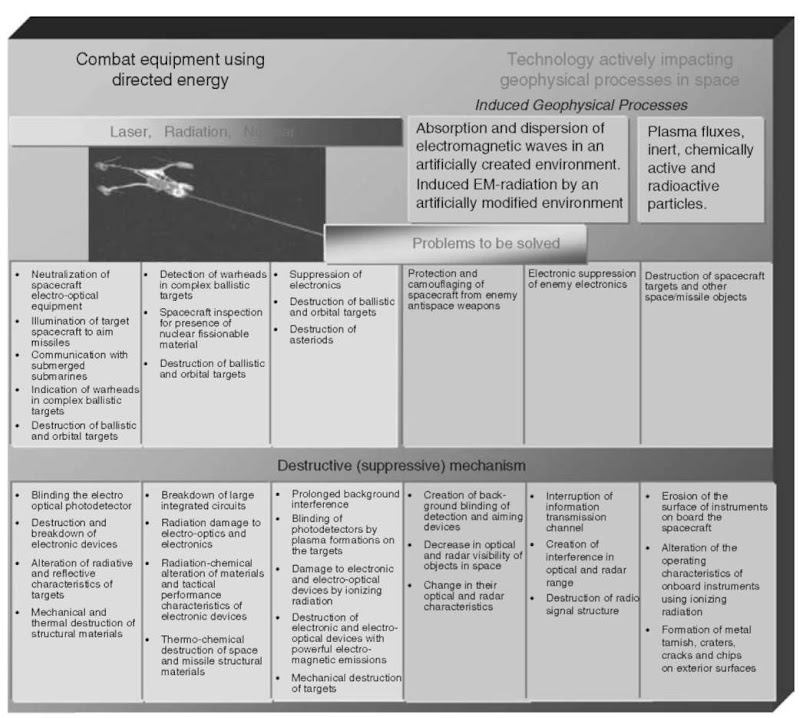
Figure 2. Projected advanced combat equipment.
All of this led, at the start of the 1990s, to a shift from the theoretical aspects of investigating space as a new arena for armed combat to solving operational problems of equipping near-Earth space as a possible theater of military operations (by analogy to the continental and naval theaters), in combination with the deployment of components of space infrastructure on the ground for launching spacecraft (combat and remote sensing), ground-based means of controlling them and receiving information to support a full spectrum of war fighting use of space systems and technology. One possible schematic depiction of space as a strategic space zone is presented in Fig. 5.
Whether space plays a dominant role in attaining war fighting objectives at this time will be determined by the extent to which it is possible to develop and deploy space-based weapons technology for conducting military operations in and from space that provide both strike capacity and combat support. This is the reason that the leading space powers are developing directed energy and kinetic weapon systems for destruction of targets. Plans call for using these weapons against ground-based facilities and aircraft in combat. An indicator of the growing significance of space combat forces is their inclusion, along with nuclear missiles, in the Strategic Command.
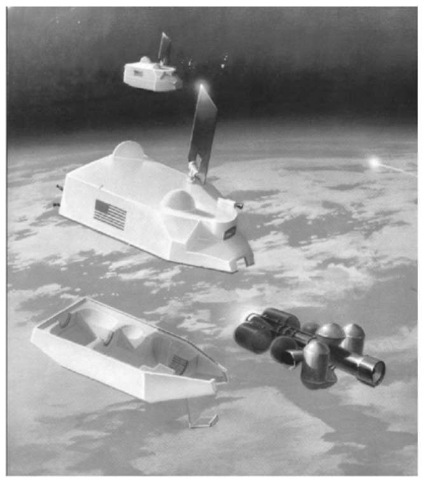
Figure 3. Orbital formations of U.S. antimissile Brilliant Pebbles (BP) spacecraft.
The growing role of these systems is underscored by the fact that the United States, having announced its withdrawal from the 1972 Anti-Ballistic Missile Treaty, is actively implementing a program to develop missile defense systems, whose weapon and information components will have a significant space component.
On the whole, the early 1990s were marked by headlong growth in the space potential of the world’s leading powers (primarily U.S. and Russia) and qualitative changes in the use of space technology to resolve military problems and issues of national security. Although previously space technology was generally used only episodically in local wars and armed conflicts (Vietnam, the Near East, Afghanistan, Falkland Islands, etc.) and was a function of the presence of a certain reconnaissance satellite in orbit and whether or not it would pass over a given surveillance region at a particular time, by 1991, one can speak of wide-scale practical use of space systems in the course of military operations. This was demonstrated in the Gulf War, when the multinational forces used space technology in all phases of their operations against Iraq. The main problems facing those charged with the control of the space systems in the conflict region involved supporting reconnaissance and communications, damage assessment of enemy targets; and navigational, topogeodesic, and meteorological support of the forces.
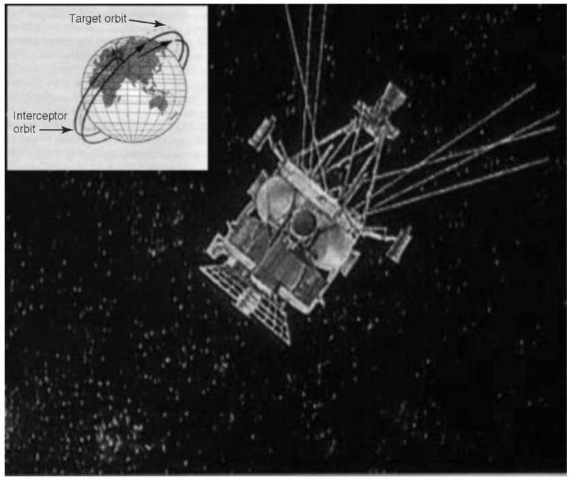
Figure 4. Exterior view of the IS spacecraft and a scheme of target interception in space.
On the whole, space technologies had such a strong effect on the operations of the multinational forces in the Persian Gulf conflict that new tactical methods for using them in warfare were developed. According to the experts, the Gulf War was the ”first war of the space era” or the ”first space war of our era.” The application of space technology, specifically the use of remote sensing information was even more impressive in scope in the military operations of NATO forces in Yugoslavia. During this conflict, the creation of a comprehensive reconnaissance system using aircraft and space was virtually completed. This system enabled real-time recovery of both strategic and tactical information. In the United States the space-based portion of this system included the KH-11,12 electro-optic reconnaissance satellites, the Lacrosse radar reconnaissance satellite, the Magnum and Vertex DMSP weather satellites, and also the French SPOT satellites. The aircraft component consisted of manned and unmanned reconnaissance planes of the Hunter, SD-289, and Predator types. The data obtained were transmitted to a national processing center in Washington, D.C., or to information reception stations in the conflict area (ground stations of the Constant Source types and shipboard terminals of the FIST type)—Fig. 6.
Installation of receivers of Navstar navigational signals on moving objects (including integrating them into onboard control systems of high-accuracy weapons) made it possible to link objects very precisely to a supporting information field, and thus, to hit targets in Yugoslavia, in a number of instances without NATO aircraft having to enter the air defense zone.
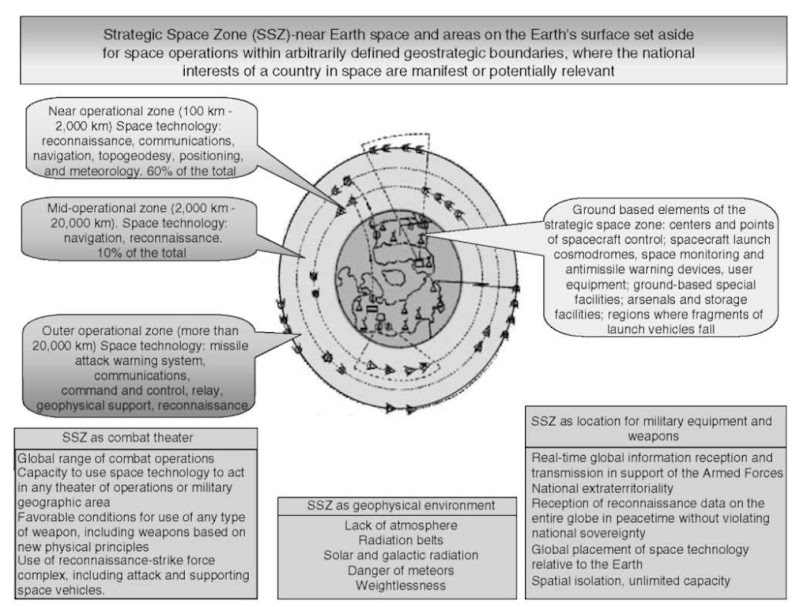
Figure 5. Space—the Strategic Space Zone.
The significant development of the mechanism for organizing the use of space communications and data transmission systems enabled real-time creation of a high-bandwidth adaptive communications and data transmission network in the conflict region. This, in turn, led to increased “depth” of use of space-based communications, making it possible to tailor the flow of data about combat conditions and to organize joint use of space systems belonging to different nations efficiently.
Note that the use of civilian-developed and commercially available systems also played an important part in solving a wide range of applied military problems through- development of mechanisms for obtaining civilian and commercial space systems for solving of military problems (thus, civilian systems are widely used by military agencies by renting channels on commercial communications satellites; the U.S. Department of Defense also gets a large amount of information from civilian satellites that surveying Earth’s natural resources, geodesy, and weather and uses more than 20% of the information obtained from the U.S. Landsat system, supplementing it with information from the SPOT (France) and MOS (Japan) remote sensing satellites; the cartographic administration of the U.S. Department of Defense is second only to the Department of Agriculture with respect to the number of photographs purchased from natural resource surveillance satellites); – organization of interactions among the leading military and civilian agencies coordinating new technology development (DARPA, NASA, and others) in the form of joint projects (TRP project) and bilateral agreements for coordination of work in the area of new technologies (agreement between NASA and the Air Force Space Command, signed in February, 1997).
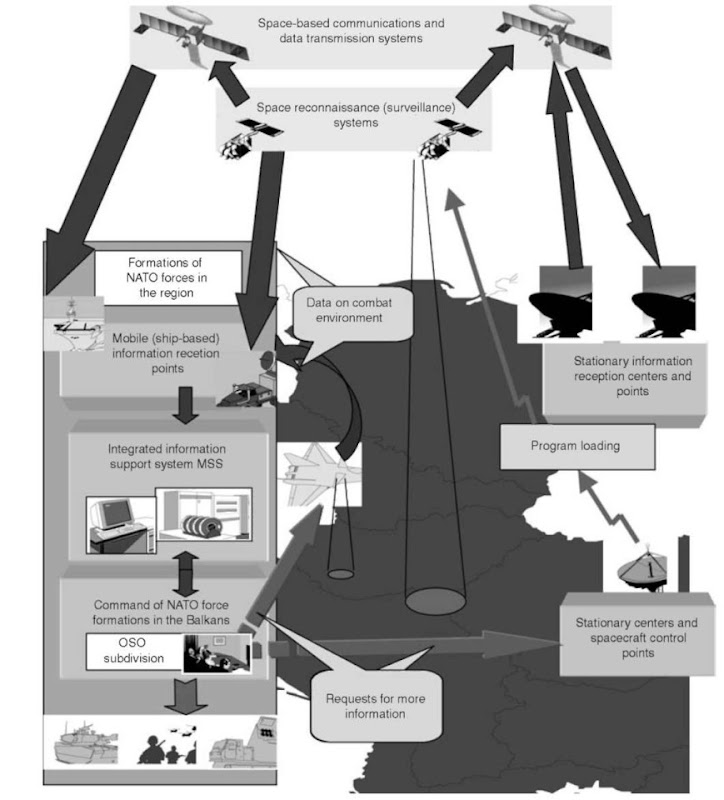
Figure 6. Functional scheme of the complex aerospace reconnaissance system.
The development of space technology for solving analogous problems in Russia has proceeded in three interrelated directions. The first direction involves the development of space technology to serve the needs of wartime. The technical basis of this developmental trend is work to develop small spacecraft and launch devices. This direction is based on the transition to a new scientific and technical stage distinguished by significant miniaturization and increased reliability of electronic technology. The development and deployment of systems based on small spacecraft entails their use to solve what are mainly tactical problems. Plans call for using these systems to support communications within the limits of a theater of operations, for observing enemy troop movements, for obtaining data for damage assessment, and for performing certain experiments.
The second direction involves development of systems for bringing remote sensing information to the lowest level of troop command. This direction only began to be developed toward the end of the twentieth century, when models of powerful, small sized artificial intelligence technology began to appear and changed the very understanding of the nature of contemporary warfare. During the implementation of this direction, positive experience was gained using the specialized Space Support Group at operational and tactical levels of command. The essential tasks of these groups are evaluating the status and capacity of the spacecraft and preparing commands to obtain data and relaying the information received (reconnaissance, weather, navigation, and communications) to the commanders at various levels of command with recommendations for their use. The tasks that the Space Support Groups must perform require that they include (Fig. 7) coordination groups for using space capabilities and reconnaissance technology, communications, navigation, and meteorological support, and also groups for processing and integrating the remote sensing information obtained. To operate efficiently, the Space Support Groups require specialized mobile stations for receiving and processing information from satellites and then issuing it in a convenient form for the user. One way such a station can be structured is presented in Fig. 8.
The third direction involves development of dual-purpose systems that solve the problems of both military and civilian users based on
• radical improvement of the ground-based space infrastructure (adaptation of the spacecraft control systems; creation of highly efficient launch facilities and mobile control systems);
• adoption of advanced spacecraft control technologies based on space-based relay and navigation systems;
• development of highly specialized dual-purpose spacecraft systems using onboard information processing based on state-of-the-art information technologies;
• optimization of configurations of dual-purpose space systems.
Implementation of these developmental directions has raised the process of force command and control to a qualitatively new level and has multiplied their combat potential severalfold. This will require corresponding qualitative changes in the design of spacecraft and command systems, the technology for evaluating and depicting remote sensing information, and support of decisions based on such information.
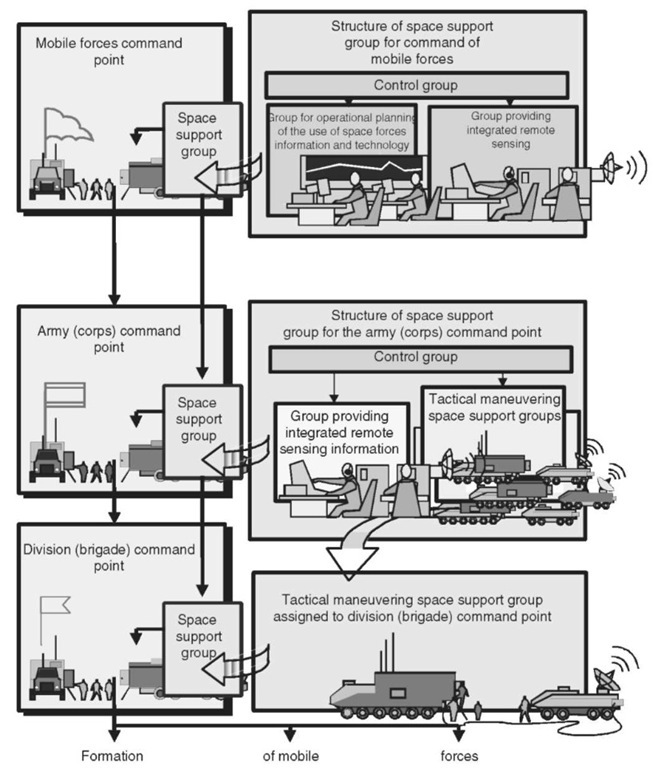
Figure 7. One version of the structure of space support groups within mobile force command points.
In addition, the development of information technologies and the start of the era of information warfare (information competition) has created the need for the next step in the applied military use of space, which will involve integrating space technology components into systems and complexes of equipment, primarily high-precision (Fig. 9), and also the development of new technologies that can be used in the information war, rather than producing lethal effects (Fig. 10). Devices based on these technologies may be placed on spacecraft and will be capable of producing constant or periodic mass effects on selected regions with the goal of temporarily putting human forces out of commission, demoralizing the population, etc.
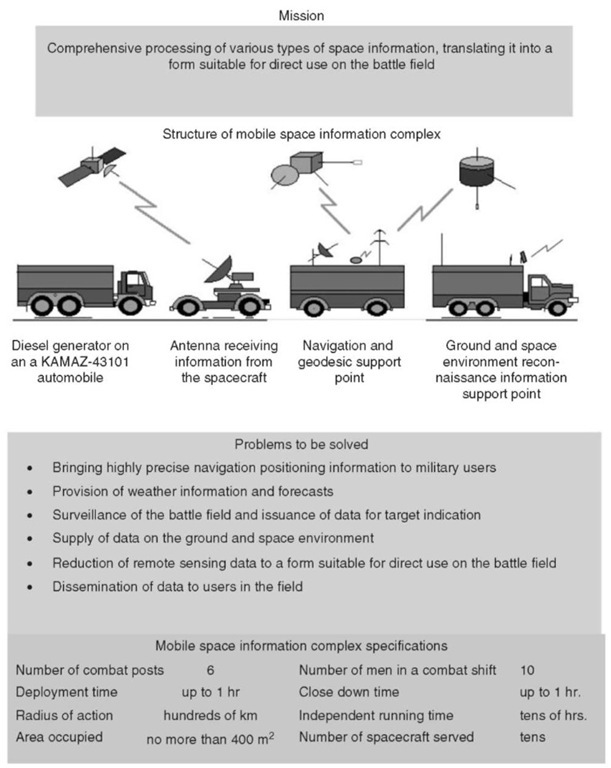
Figure 8. Mobile space information complex.
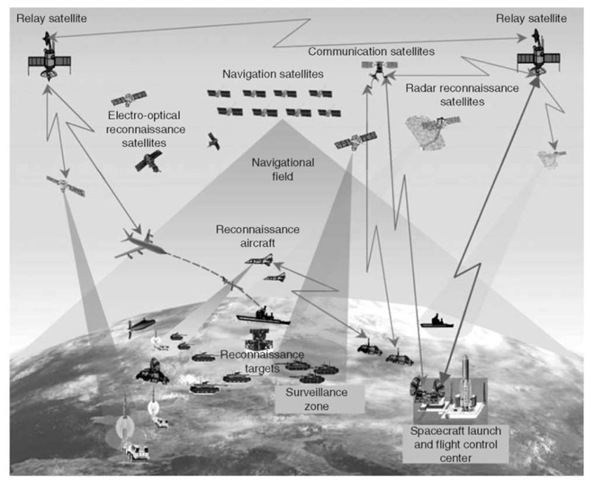
Figure 9. Integrated space, air, and ground-based reconnaissance and target designation system.
The potential for solving such problems from space will lead to a qualitative change in the form and methods of combat operations and in the organization of combat overall. The major goal of an ”information war” is disintegration and disruption of the cohesion of command and control of enemy groupings, turning them into isolated, disoriented, and unmanageable elements that can subsequently be rendered harmless through physical destruction. The broad spectrum of issues related to the military uses of space shows that uncontrolled operations in this area could lead to catastrophic consequences, which is inevitably a cause of concern to the world community and thus will lead to the creation of international legal standards regulating military operations in space.
The rampant development of space systems and the enhancement of their role in maintaining the combat-readiness of modern armed forces has led to the irreversible militarization of near-Earth space in the interests of solving problems of reconnaissance, communications, navigation, and meteorological support, and missile defense. It is widely believed that such functions of space technology have a stabilizing effect and comply with Article 51 of the UN Charter, supporting nations’ right to self-defense.
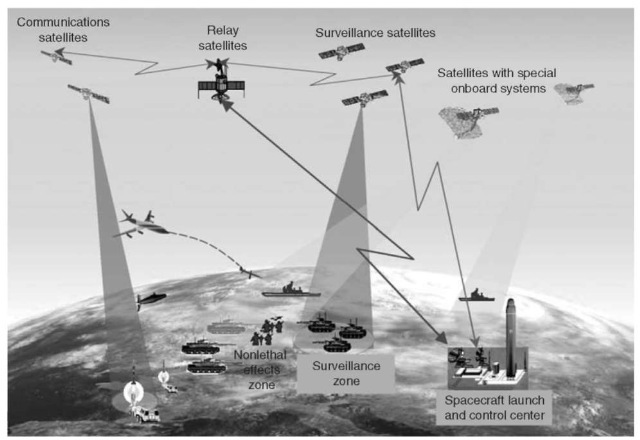
Figure 10. Satellites and nonlethal special onboard systems.
The military aspect of modern cosmonautics is thus manifest in the implementation of military space operations, a term which is generally taken to mean any operation associated with work to study and use space technology to ensure and maintain defense and security. Military space operations may include applied military research and development, space-based communications, reconnaissance, strategic defense, navigational, topogeodesic and meteorological support from space; the solution of particular problems in antisatellite and antimissile defenses, and also other forms of activity implemented in the interests of military and semimilitary agencies.
Contemporary military space operations, strictly speaking, are very weakly regulated by international law for the following reasons. First, because of the relatively recent and limited use of space for strictly military purposes, the need to develop exhaustive legal standards for military space operations has still not been universally acknowledged, and any real likelihood of developing them in the near future remains extremely low. Second, the term ”military space operations” has not yet been either officially defined or incorporated in international law (the definition cited is merely one of the many that are in practical current use.) The multiple interpretations of this term result from the fact that such operations, especially those implemented during peacetime, may be seen as furthering the interests of humanity (from the standpoint of maintaining strategic stability and international security). At the same time, its destabilizing functions are capable of involving the international community in a qualitatively new round of the arms race and all of its negative military-strategic, political, technical, economic,and other consequences. Third, international space law has no unambiguous and exhaustive interpretation of the concept ”operations for peaceful purposes.” A more widespread concept, but one that has still not been officially adopted concept is ”dual use technology” (intended for solving of purely peaceful, as well as strictly military applied problems in and from space). Thus, the current non-codified regime of military space activity is built on one of the basic principles of international law—”anything not specifically forbidden is permitted.” But despite this fact, military space operations could, with a greater or lesser degree of arbitrariness, equally be interpreted as forbidden, permitted, or not specified by international law.
One of the directions of military space operations, which may require legal regulation, involves adverse man-made effects on the space environment. Such effects may result from traditional (increase in the scale of space operations) as well as from military strategic factors (the attempt to anticipate and prevent implementation of aggressive actions in near-Earth space). Thus, as humanity continues to conquer space and new space technologies are developed, the applied military role of space in ensuring national security of states will certainly increase.
